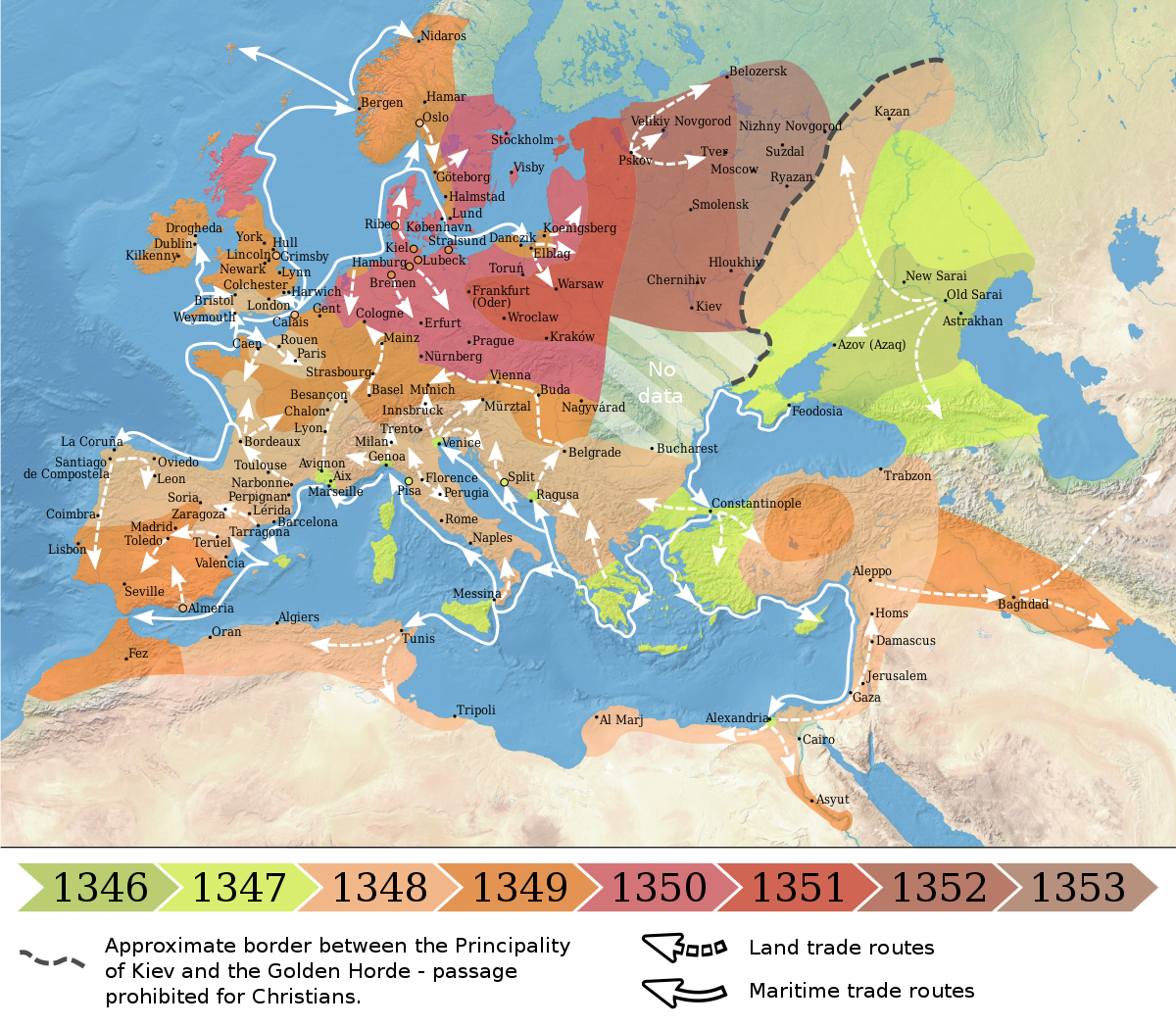This is an old revision of the document!
Group 6
Transmission pathways of plague
Wiki site of the practical exercise of the VIII Southern-Summer School on Mathematical Biology.
Here you will find the exercise assignment and the group's products.
If you are a group member login to edit this page, create new pages from it, and upload files.
Introduction
Black Death was part of a pandemic that killed up to a half of Eurasian population in the 12th century. This series of epidemics was attributed to bulbonic plague, as well as the Justinian Pandemics and the recurrent plague epidemics that burst over Europe until the 17th century.
Many rodents are reservoirs of the plague bacillus Yersinia pestis, which is transmitted by fleas. Therefore, urban outbreaks have been explained by the transmission of the disease from infected rats to humans through flea bites. Nevertheless, this epidemiological model does not match some key features of the Black Death and other pandemics attributed to bulbonic plague. For instance, the ancient epidemics spread over large areas faster but had larger recurrence times than the plagues of the 19-20th centuries, from which the classic rat-flea-human cycle was deduced.
A recent review (Setenseth et al. 2008) concluded that there are many other transmission pathways to humans, which can be more or less important according to the ecological context. Such variation in the main transmission routes might explain the marked differences in the epidemiological dynamics among ancient and modern plague outbreaks.
For instance, there was a higher prevalence of blood-sucking bugs in humans 1) at the time of the Black Death than in recent times. The human-to-human transmission by way of these ectoparasites has been advanced as a route that could speed up the spread of plague. On the other hand, Appleby (1980) claimed that the way that plague spread over London during the 1665 epidemic is better explained by the rat-flea-human pathway. According to this author, acquired immunity by rats explains why plague suddenly disappeared from England since then.


